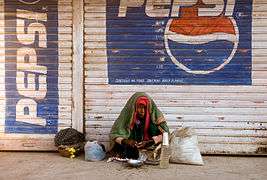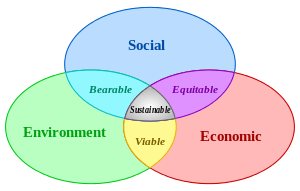Urban geography

Urban geography is the subdiscipline of geography which concentrates on those parts of the Earth's surface that have a high concentration of buildings and infrastructure. Predominantly towns and cities, these are settlements with a high population density and with the majority of economic activities in the secondary sector and tertiary sectors.
Research interest
Urban geographers are primarily concerned with the ways in which cities and towns are constructed, governed and experienced. Contrary to neighboring disciplines such as urban anthropology, urban planning and urban sociology, urban geography mostly investigates the impact of urban processes on the earth's surface's social and physical structures. Urban geographical research can be part of both human geography and integrated geography.
Areas of study
There are essentially two approaches to urban geography: the investigation of systems of cities and research on cities as systems. The first approach involves the study of problems relating to the spatial distribution of cities themselves and the complex patterns of movement, flows and linkages that bind them in space. The second approach is on the study of patterns of distribution and interaction within cities, essentially the study of their inner structure.
Research topics
Cities as centers of manufacturing and services
Cities differ in their economic makeup, their social and demographic characteristics, and the roles they play within the city system. One can trace these differences back to regional variations in the local resources on which growth was based during the early development of the urban pattern and in part to the subsequent shifts in the competitive advantage of regions brought about by changing locational forces affecting regional specialization within the framework of a market economy. The recognition of different city types is critical for the classification of cities in urban geography. For such classification, emphasis given in particular to functional town classification and the basic underlying dimensions of the city system.[1]
The purpose of classifying cities is twofold. On the one hand, it is undertaken to search reality for hypotheses. In this context, the recognition of different types of cities on the basis of, for example, their functional specialization may enable the identification of spatial regularities in the distribution and structure of urban functions and the formulation of hypotheses about the resulting patterns. On the other hand, classification is undertaken to structure reality in order to test specific hypotheses that have already been formulated. For example, to test the hypotheses that cities with a diversified economy grow at a faster rate then those with a more specialized economic base, cities must first be classified so that diversified and specialized cities can be differentiated.
The simplest way to classify cities is to identify the distinctive role they play in the city system. There are three distinct roles:
- central places functioning primarily as service centers for local hinterlands
- transportation cities performing break-of-bulk and allied functions for larger regions
- specialized-function cities, dominated by one activity such as mining, manufacturing or recreation and serving national and international markets
The composition of a city's labor force has traditionally been regarded as the best indicator of functional specialization, and different city types have been most frequently identified from the analysis of employment profiles. Specialization in a given activity is said to exist when employment in it exceeds some critical level.[2]
The relationship between the city system and the development of manufacturing has become very apparent. The rapid growth and spread of cities within the heartland-hinterland framework after 1870 was conditioned to a large extent by industrial developments, and the decentralization of population within the urban system in recent years is related in large part to the movement of employment in manufacturing away from traditional industrial centers. Manufacturing is found in nearly all cities, but its importance is measured by the proportion of total earnings received by the inhabitants of an urban area. When 25 percent or more of the total earnings in an urban region derive from manufacturing, that urban area is arbitrarily designated as a manufacturing center.
The location of manufacturing is affected by myriad economic and non-economic factors, such as the nature of the material inputs, the factors of production, the market and transportation costs. Other important influences include agglomeration and external economies, public policy and personal preferences. Although it is difficult to evaluate precisely the effect of the market on the location of manufacturing activities, two considerations are involved:
- the nature of and demand for the product
- transportation costs
See also
References
External links
- Imagining Urban Futures
- Social and Spatial Inequalities
- Urban Geography Specialty Group of the Association of American Geographers
- Urban Geography Research Group of the Royal Geographical Society-Institute of British Geographers

